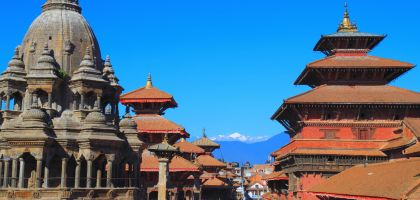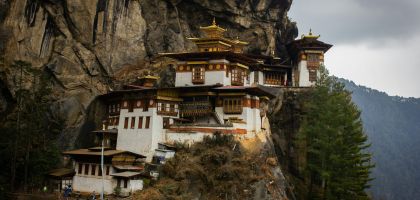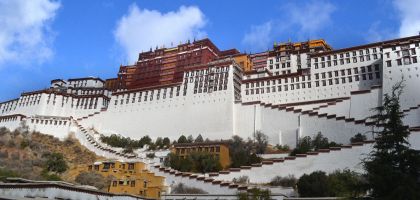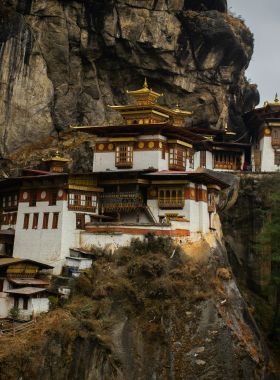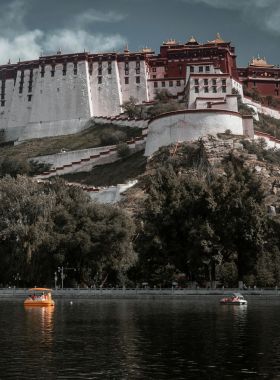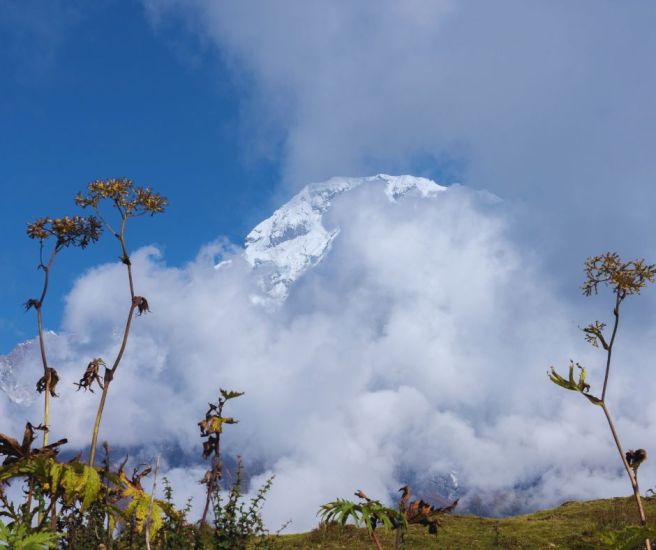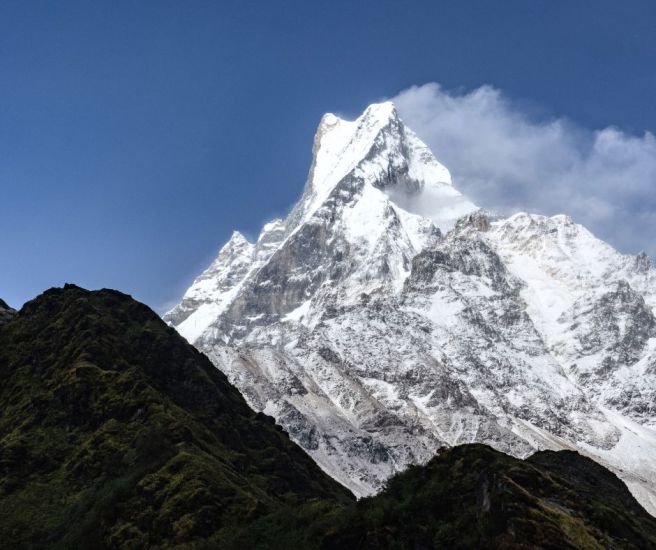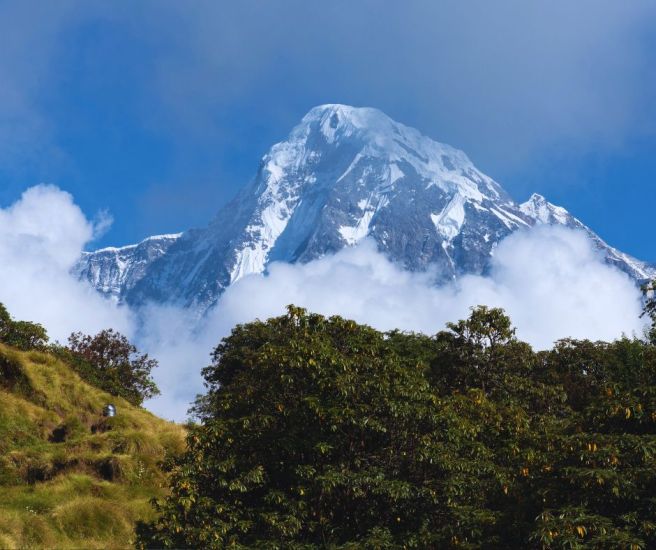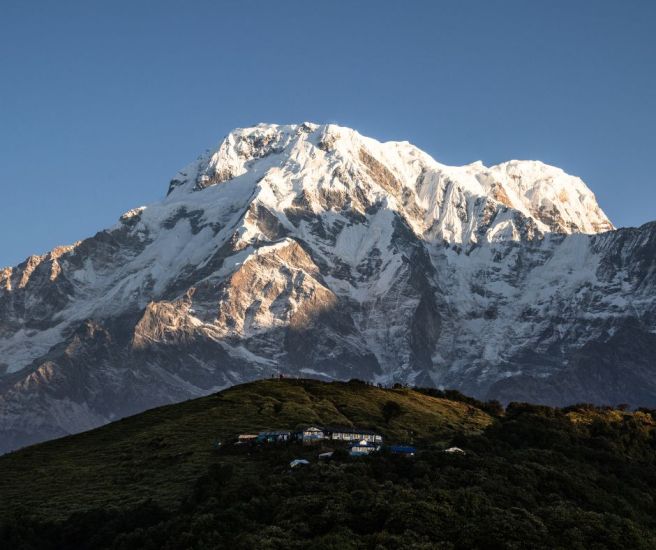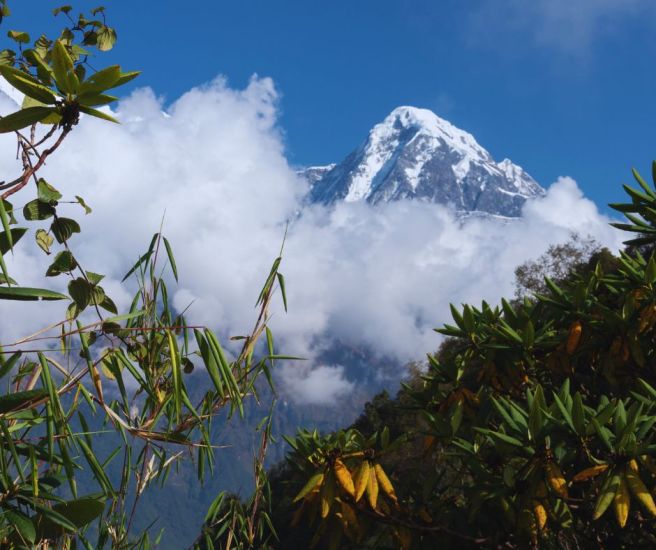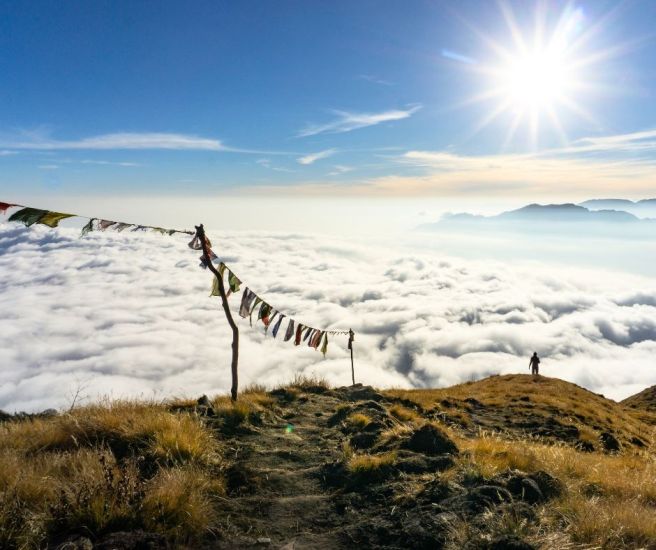Mardi Himal Trek
10 Days / Nepal
Activity
Difficulty Level
Destinations
Trip Start / End
Max Altitude
Accommodation
Travel Style
Best time to travel
Personalized Travel Advice

Dev Raj Nepal
+977 9851096523
Detailed Itinerary
01
DAY
01
Welcome to Nepal! Upon arrival at Tribhuvan International Airport, you will be greeted and transferred to your hotel in Kathmandu. Take the day to rest and recover from your journey or explore the vibrant streets of Thamel, known for its bustling markets, cafes, and trekking shops. If time permits, you can visit cultural landmarks like Kathmandu Durbar Square or the Swayambhunath Stupa (Monkey Temple). In the evening, attend a trek briefing where your guide will discuss the trek itinerary, safety measures, and gear requirements.
Arrival Kathmandu
Welcome to Nepal! Upon arrival at Tribhuvan International Airport, you will be greeted and transferred to your hotel in Kathmandu. Take the day to rest and recover from your journey or explore the vibrant streets of Thamel, known for its bustling markets, cafes, and trekking shops. If time permits, you can visit cultural landmarks like Kathmandu Durbar Square or the Swayambhunath Stupa (Monkey Temple). In the evening, attend a trek briefing where your guide will discuss the trek itinerary, safety measures, and gear requirements.
02
DAY
02
Early in the morning, take a scenic 25-minute flight to Pokhara, enjoying breathtaking views of the Annapurna and Dhaulagiri ranges. Upon landing, drive for about 1.5 hours to Kande (1,770m), the starting point of your trek. The trail begins with a steady ascent through terraced fields and rhododendron forests, offering glimpses of Machapuchare (Fishtail Peak). After about 4 hours of trekking, you will reach Pitam Deurali (2,100m), a serene ridge with stunning panoramic views of Annapurna South, Hiunchuli, and Machapuchare. Enjoy the tranquil atmosphere and spend the night in a teahouse.
Kathmandu – Pokhara – Kande & Trek to Pitam Deurali
Early in the morning, take a scenic 25-minute flight to Pokhara, enjoying breathtaking views of the Annapurna and Dhaulagiri ranges. Upon landing, drive for about 1.5 hours to Kande (1,770m), the starting point of your trek. The trail begins with a steady ascent through terraced fields and rhododendron forests, offering glimpses of Machapuchare (Fishtail Peak). After about 4 hours of trekking, you will reach Pitam Deurali (2,100m), a serene ridge with stunning panoramic views of Annapurna South, Hiunchuli, and Machapuchare. Enjoy the tranquil atmosphere and spend the night in a teahouse.
03
DAY
03
Leaving Pitam Deurali, the trail gradually enters dense rhododendron and oak forests, creating a mystical setting. This section of the trek is relatively quiet compared to other trekking routes, allowing for a peaceful connection with nature. The path undulates with occasional steep sections, and as you gain altitude, the vegetation becomes more alpine. After a long yet rewarding 6 trek, you will reach Forest Camp (2,600m), a small clearing in the middle of the forest with basic teahouses. Enjoy the silence of the jungle and a warm meal before resting for the night.
Pitam Deurali – Forest Camp
Leaving Pitam Deurali, the trail gradually enters dense rhododendron and oak forests, creating a mystical setting. This section of the trek is relatively quiet compared to other trekking routes, allowing for a peaceful connection with nature. The path undulates with occasional steep sections, and as you gain altitude, the vegetation becomes more alpine. After a long yet rewarding 6 trek, you will reach Forest Camp (2,600m), a small clearing in the middle of the forest with basic teahouses. Enjoy the silence of the jungle and a warm meal before resting for the night.
04
DAY
04
The trek continues with a gradual climb through the dense forest before emerging above the tree line. As you ascend, you will start to witness breathtaking views of the Annapurna range. The transition from dense jungle to open ridges creates a surreal experience, with clouds drifting below you. After approximately 4-5 hours of trekking, you will arrive at Badal Danda (3,210m), which translates to “Cloud Hill.” As the name suggests, this spot often feels like being above the clouds, offering mesmerizing views of Machapuchare and Mardi Himal. The sunset here is particularly stunning, painting the peaks in shades of gold and pink.
Forest Camp – Badal Danda
The trek continues with a gradual climb through the dense forest before emerging above the tree line. As you ascend, you will start to witness breathtaking views of the Annapurna range. The transition from dense jungle to open ridges creates a surreal experience, with clouds drifting below you. After approximately 4-5 hours of trekking, you will arrive at Badal Danda (3,210m), which translates to “Cloud Hill.” As the name suggests, this spot often feels like being above the clouds, offering mesmerizing views of Machapuchare and Mardi Himal. The sunset here is particularly stunning, painting the peaks in shades of gold and pink.
05
DAY
05
Today’s trek is short but steep, leading you further along the ridge to High Camp (3,580m). The trail opens up to sweeping views of Annapurna South, Hiunchuli, and Machapuchare, with occasional sightings of Himalayan monal (Danphe), Nepal’s national bird. The higher altitude becomes noticeable, so trekking at a steady pace is essential. After about 4 hours, you will reach High Camp, a small settlement perched on a ridge with spectacular mountain views. Spend the rest of the day acclimatizing and enjoying the crisp mountain air.
Badal Danda – High Camp
Today’s trek is short but steep, leading you further along the ridge to High Camp (3,580m). The trail opens up to sweeping views of Annapurna South, Hiunchuli, and Machapuchare, with occasional sightings of Himalayan monal (Danphe), Nepal’s national bird. The higher altitude becomes noticeable, so trekking at a steady pace is essential. After about 4 hours, you will reach High Camp, a small settlement perched on a ridge with spectacular mountain views. Spend the rest of the day acclimatizing and enjoying the crisp mountain air.
06
DAY
06
Today is the most challenging and rewarding day of the trek. Start early, following the narrow trail leading to Mardi Himal Base Camp (4,450m). The path is steep and rugged, often covered with snow, depending on the season. As you ascend, the views become increasingly dramatic, with Machapuchare towering in front of you and the entire Annapurna range stretching across the horizon.
Reaching Mardi Himal Base Camp is a moment of triumph, offering unparalleled 360-degree views of Annapurna I, Annapurna South, Hiunchuli, Machapuchare, and Mardi Himal. After soaking in the stunning scenery, retrace your steps back to High Camp, where you can relax and celebrate the achievement.
Trek to Mardi Himal Base Camp & Return to High Camp
Today is the most challenging and rewarding day of the trek. Start early, following the narrow trail leading to Mardi Himal Base Camp (4,450m). The path is steep and rugged, often covered with snow, depending on the season. As you ascend, the views become increasingly dramatic, with Machapuchare towering in front of you and the entire Annapurna range stretching across the horizon.
Reaching Mardi Himal Base Camp is a moment of triumph, offering unparalleled 360-degree views of Annapurna I, Annapurna South, Hiunchuli, Machapuchare, and Mardi Himal. After soaking in the stunning scenery, retrace your steps back to High Camp, where you can relax and celebrate the achievement.
07
DAY
07
Instead of retracing your steps via the same route, today’s trail descends towards Siding Village (1,700m), offering a change in scenery. The path takes you through lush forests, terraced fields, and small villages, giving you a glimpse of local life in the Annapurna region. The descent can be tough on the knees, but the warm hospitality of Siding Village, a traditional Gurung settlement, makes for a great cultural experience. Enjoy a hearty meal and rest in a local teahouse or homestay.
High Camp – Siding Village
Instead of retracing your steps via the same route, today’s trail descends towards Siding Village (1,700m), offering a change in scenery. The path takes you through lush forests, terraced fields, and small villages, giving you a glimpse of local life in the Annapurna region. The descent can be tough on the knees, but the warm hospitality of Siding Village, a traditional Gurung settlement, makes for a great cultural experience. Enjoy a hearty meal and rest in a local teahouse or homestay.
08
DAY
08
After breakfast, take a 2-hour drive back to Pokhara, passing through beautiful countryside landscapes. Upon arrival in Pokhara, check into your hotel and enjoy a relaxing afternoon by Phewa Lake. You can explore attractions like the World Peace Pagoda, Davis Falls, or take a boat ride on the lake. In the evening, enjoy a well-deserved meal at one of Pokhara’s many lakeside restaurants.
Siding Village – Pokhara
After breakfast, take a 2-hour drive back to Pokhara, passing through beautiful countryside landscapes. Upon arrival in Pokhara, check into your hotel and enjoy a relaxing afternoon by Phewa Lake. You can explore attractions like the World Peace Pagoda, Davis Falls, or take a boat ride on the lake. In the evening, enjoy a well-deserved meal at one of Pokhara’s many lakeside restaurants.
09
DAY
09
Take an early morning 25-minute flight back to Kathmandu, enjoying one last aerial view of the Himalayas. Depending on your departure schedule, you can spend the day shopping for souvenirs in Thamel or visiting cultural sites like Pashupatinath, Boudhanath, or Patan Durbar Square.
Pokhara – Kathmandu
Take an early morning 25-minute flight back to Kathmandu, enjoying one last aerial view of the Himalayas. Depending on your departure schedule, you can spend the day shopping for souvenirs in Thamel or visiting cultural sites like Pashupatinath, Boudhanath, or Patan Durbar Square.
10
DAY
10
In the morning, you might have some time for last minute shopping for souvenirs. Later, you will be transferred to the airport for departure.
Kathmandu – Departure
In the morning, you might have some time for last minute shopping for souvenirs. Later, you will be transferred to the airport for departure.
Includes / Excludes
Inclusions
-
Airports pick up and drop off, upon arrival and departure in Kathmandu.
-
Accommodations on Twin Sharing basis
-
Trained Guide
-
Meals mentioned in the itinerary
-
Porter
-
Seasonal fresh fruits as Available
-
Vehicles and transfers
-
Manaslu Special trekking permit fee.
-
Manaslu Conservation Area entrance permit fee.
-
Annapurna Conservation Area entrance permit fee.
Exclusions
-
International airfare
-
Nepal entry visa fee
-
Travel insurance
-
All alcoholic drinks
-
Services not mentioned
-
Meals not mentioned
-
Tips for the guide and porter.
Trip Info
Mardi Himal is a striking mountain in Nepal, standing at about 5,587 metres in the southern section of the Annapurna Himal. It rises gracefully beside the iconic Machhapuchhre, with which it shares a connecting ridge.
From a distance, Mardi Himal appears as a slender peak, its slopes merging into the rocky spurs and glaciers that descend toward the lush valleys below. Though smaller in height compared to its neighbours, its sharp contours and isolated prominence give it a distinctive beauty within the Annapurna range.
Geographically, Mardi Himal forms part of a complex system of ridges and glacial formations that extend from the Annapurna Massif. Its terrain shifts dramatically from dense rhododendron forests and alpine meadows at the lower elevations, to barren rock and snowfields near its summit.
The mountain’s southern face is particularly steep, lined with rugged cliffs and narrow ridgelines that descend toward the Modi Khola valley. This unique topography provides insight into the geological forces that shaped the central Himalayas over millions of years and forms a fantastic trail for Mardi Himal Trek.
Ecologically, the region around Mardi Himal is rich in biodiversity. The lower slopes are covered with temperate forests that shelter a wide variety of birds and medicinal plants, while higher up, the landscape transforms into subalpine grasslands frequented by grazing yaks.
During spring, the entire region bursts into color with blooming rhododendrons, and in autumn, the clear skies reveal breathtaking views of Annapurna South, Hiunchuli, and Machhapuchhre. Beyond its natural splendour, Mardi Himal remains an emblem of harmony between wilderness and silence, making the Mardi Himal trek an incredible experience.
Mardi Himal Trek
The Mardi Himal Trek is one of Nepal’s most scenic and rewarding short treks, offering an intimate experience of the Annapurna Himalayas. Beginning near Pokhara, the route gradually ascends through rhododendron forests and mountain villages toward the high ridges below Mardi Himal, a 5,587-metre peak standing beside the iconic Machhapuchhre.
Unlike the more crowded trails of Annapurna Base Camp or Poon Hill, Mardi Himal retains a quiet, untouched charm. The path winds through a shifting landscape, first dense with moss-covered trees and orchids, and then opening to alpine pastures where clouds drift across sweeping mountain faces.
As trekkers climb higher toward High Camp and the Base Camp at around 4,500 metres, the panorama expands dramatically. Annapurna South, Hiunchuli, and Machhapuchhre dominate the skyline, so close that they seem within reach. The ridgeline trail allows continuous views of the valleys far below and the peaks towering above, creating a rare sense of immersion in the Himalayan world.
Tea houses along the route offer simple hospitality, blending local Gurung culture with the camaraderie of fellow travelers who come seeking both adventure and solitude. This cultural connection makes Mardi Himal trek even more rewarding.
The Mardi Himal Trek is considered moderate in difficulty, accessible to anyone with reasonable fitness and a love for mountain landscapes. Spring and autumn are the best seasons to undertake the journey, when skies are clear and the rhododendrons bloom in vivid shades of red and pink.
Beyond its natural splendour, the Mardi Himal Trek remains an symbol of harmony between nature and solitude. It is a trail that invites reflection, connection, and a quiet appreciation of the timeless exuberance of the Nepal Himalayas.
The best time to do the Mardi Himal Trek is during the pre-monsoon and post-monsoon seasons, which are:
Spring (March to May): This is one of the most popular times for Mardi Himal Trek in Nepal. The weather is generally clear, and the rhododendron forests along the trail bloom in vibrant colors, adding a magical touch to the landscape. The temperatures are mild, making for a pleasant trekking experience.
Autumn (September to November): This is another prime season for the Mardi Himal Trek. The weather is dry and stable, with clear skies offering stunning views of the Annapurna range. The temperatures are cool, especially at higher altitudes, but the conditions are perfect for trekking in the Himalayas.
Winter (December to February) and Summer (June to August) are less ideal due to colder temperatures and the monsoon season, but the trek is still possible with the right preparation.
Before and after the Mardi Himal Trek, private vehicles will be used for transfers and sightseeing. These include comfortable cars or SUVs, which are good for navigating both urban and rural areas. These vehicles are chosen for their comfort and reliability, ensuring a smooth and enjoyable journey between destinations. They are equipped to handle various road conditions and provide a high level of convenience for travelers.
For 3 passengers or more, we use a comfortable coaster or mini-van.
Food on the Mardi Himal Trek offers a delightful mix of traditional Nepali and Tibetan cuisine, providing trekkers with local flavors and ingredients. Dal Bhat, a hearty and nutritious meal consisting of rice, lentil soup, and vegetables, is a staple in Nepali trekking cuisine and is often served multiple times a day. It’s usually accompanied by a side of pickle for extra flavor. Momo, steamed or fried dumplings filled with meat or vegetables, are a popular snack or lunch option along the trail.
For breakfast, Tibetan bread, a type of flatbread served with butter or jam, is commonly enjoyed, providing energy for the day ahead. Warm soups, such as vegetable soup, noodle soup, or thukpa (a Tibetan noodle soup), are common, offering comfort and warmth, especially in the colder regions.
In Kathmandu and Pokhara, the accommodations are more modern and comfortable, with a range of hotels available that cater to different budgets. You can expect private rooms with en-suite bathrooms, hot showers, and other amenities like Wi-Fi and room service, providing a relaxing stay before and after your trek.
During the Mardi Himal Trek, accommodations consist of teahouses or guesthouses, which are simple, family-run lodges that provide a place to sleep, meals, and a warm environment. Teahouses are basic but functional, with rooms typically featuring twin beds, wooden floors, and a blanket for warmth. Some teahouses may offer additional amenities such as hot water (for a fee) or charging facilities, though this varies from place to place.
Though the accommodations in the teahouses can be simple, they are a fundamental part of the trekking experience, allowing trekkers to connect with the local culture and landscape while enjoying the warmth and hospitality of the local people.
Clothing & Footwear
- Waterproof and breathable jacket and pants
- Insulating layers (fleece, down jacket)
- Thermal base layers
- Hiking pants and shorts
- Warm hat and sun hat
- Gloves
- Warm socks
- Sturdy, waterproof hiking boots
- Comfortable sandals or shoes
Gear & Accessories
- Backpack (50-70 liters)
- Sleeping bag (rated for cold temperatures)
- Trekking poles
- Headlamp with extra batteries
- Sunglasses
- Sunscreen and lip balm
- Water bottles or hydration system
- Water purification tablets or filter
- Toiletries
- Quick-dry towel
Remember to pack light and efficiently.
Risks:
Altitude Sickness: At higher elevations (especially above 3,000m), trekkers may experience altitude sickness. Symptoms include headaches, dizziness, nausea, and shortness of breath. To reduce the risk, it’s essential to acclimatize properly and take the trek at a steady pace.
Weather Conditions: The weather in the Himalayas can change quickly, especially at higher altitudes. Sudden snowstorms or heavy rain can create slippery paths, and visibility can be reduced, making trekking challenging. Be prepared with proper gear and check the forecast before heading out.
Trekking in Remote Areas: While the Mardi Himal Trek is less crowded, its remoteness can pose challenges if medical or emergency help is needed. Access to help may be limited, so it’s important to be prepared and carry necessary first aid and communication devices.
Physical Strain: Although the Mardi Himal Trek is considered an easy trek in comparison to more strenuous Himalayan routes, the steep ascents and long days of trekking can still put a strain on the body, especially for those not accustomed to trekking at altitude.
Rewards:
Spectacular Mountain Views: The Mardi Himal trek offers stunning views of some of Nepal’s most iconic peaks, including Machhapuchhre (Fishtail), Mardi Himal, Annapurna South, and Hiunchuli. Reaching Mardi Himal Base Camp (4,450m) is particularly rewarding, with breathtaking close-up views of the Annapurna range.
Peace and Solitude: Unlike more popular treks, the Mardi Himal Trek offers peaceful solitude, allowing trekkers to immerse themselves in nature without the crowds. This makes it an excellent choice for those seeking a more intimate trekking experience.
Cultural Exposure: Trekking through Gurung and Magar villages provides a unique opportunity to experience the local culture and way of life. Visitors can interact with friendly locals, observe traditional practices, and witness the beauty of rural Nepal.
Biodiversity: The trek passes through lush rhododendron forests, home to a wide variety of flora and fauna. Depending on the season, trekkers may encounter vibrant wildflowers and possibly wildlife such as Himalayan tahr or monal pheasants.
Achieving a Personal Goal: For many, completing the Mardi Himal Trek is a significant achievement. It’s an accessible yet challenging trek, allowing trekkers to experience the Himalayas in all their grandeur while achieving a sense of personal accomplishment at Mardi Himal Base Camp.
Stunning Scenery
On the Mardi Himal Trek, expect breathtaking mountain views of Machhapuchhre (Fishtail), Mardi Himal, Annapurna South, and Hiunchuli throughout your journey. As you trek, you’ll be surrounded by lush rhododendron forests, alpine meadows, and incredible panoramas of the Annapurna Range, making this one of the most scenic treks in Nepal.
Diverse Terrain
The Mardi Himal Trek offers a variety of terrain. From dense rhododendron forests to steep ridges and rocky paths, the trail offers a bit of everything. As you approach High Camp, expect more exposed trails with sweeping mountain views, making this trek an excellent choice among easy treks in Nepal for those seeking a balance of challenge and beauty.
Varied Altitudes
Starting at a low altitude in Pokhara (827m), you’ll gradually ascend to higher elevations like Mardi Himal Base Camp (4,450m). As you climb, you’ll feel the effects of altitude. Acclimatization is key, and while Mardi Himal Trek is one of the easier treks in Nepal, it’s still essential to go at your own pace to prevent altitude sickness.
Remote Villages and Local Culture
Along the way, you’ll pass through small, rural villages where Gurung and Magar communities live. The local culture is rich and vibrant, providing an authentic taste of life in the Himalayas. Staying in teahouses along the route allows you to interact with locals and experience Nepali hospitality firsthand.
Physical Challenge
The Mardi Himal Trek is considered one of the more moderate and easy treks in Nepal. Expect 6-7 hours of walking on some days with steep sections, but the trek remains manageable for those with basic fitness. It’s an ideal trek for those looking to experience the Himalayas without the more strenuous challenges of other treks in Nepal like the Everest Base Camp.
Comfortable Teahouse Stays
Throughout the trek, you’ll stay in teahouses, which offer simple but comfortable accommodation. Rooms typically come with twin beds, blankets, and shared bathrooms. The teahouses also provide hearty Nepali meals such as dal bhat, noodles, and momos, making it a cozy experience amidst the stunning Himalayan scenery.
Unpredictable Weather
In the Himalayas, the weather can change quickly, especially at higher altitudes. While spring and autumn provide generally clear skies and mild temperatures, be prepared for sudden weather changes as you approach High Camp and Mardi Himal Base Camp. Carry layers and waterproof gear to ensure comfort throughout the trek.
Peace and Tranquility
One of the best aspects of the Mardi Himal Trek is the peaceful solitude. This trail sees fewer trekkers compared to other famous routes, such as the Annapurna Circuit or Everest Base Camp, allowing you to enjoy the natural beauty in relative calm and seclusion.
Sense of Achievement
Reaching Mardi Himal Base Camp (4,450m) is a major accomplishment. The stunning close-up views of the Annapurna Range and Mardi Himal offer a sense of fulfillment and a memorable experience for all trekkers. This trek provides the perfect opportunity to test your endurance while enjoying the majesty of Trekking in Nepal.
FAQs
Personalized Travel Advice

Dev Raj Nepal
+977 9851096523
